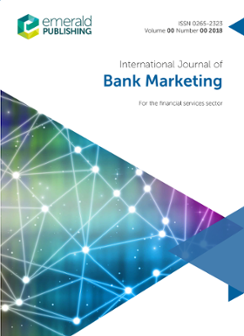Using item response theory in the assessment of the financial well-being scale: an application in Brazil and India
IF 6.3
3区 管理学
Q1 BUSINESS
引用次数: 0
Abstract
PurposeThis study aims to evaluate Netemeyer and colleagues' much cited financial well-being scale in Brazil and India and compare responses from different demographics. It also compares the results using two analysis techniques, item response theory (IRT) and confirmatory factor analysis (CFA).Design/methodology/approachA total of 994 survey responses from Brazil and 1,081 from India were collected. IRT and CFA models were used to analyse the data.FindingsThe results demonstrate the two-dimensional structure of the financial well-being scale and show that different items are differentially useful in measuring the construct across different groups. These findings may support the scale's future refinement and use in applied studies that will target specific groups (e.g. males, females, younger respondents and older respondents).Research limitations/implicationsThis study serves as an example to others who can explore the advantages of IRT over classical test theory methods to assess the psychometric properties of scales aimed at measuring latent constructs of interest in the field of marketing.Practical implicationsThe correct diagnosis of financial well-being is important to guide interventions by governments and non-governmental entities, as well as by financial institutions interested in better understanding individuals.Originality/valueThe authors show how the identification of the characteristics of scale items provided by the IRT technique allows for a better understanding of its properties and how it can be improved.项目反应理论在财务幸福量表评估中的应用:在巴西和印度的应用
目的本研究旨在评估Netemeyer及其同事在巴西和印度被广泛引用的财务幸福感量表,并比较不同人口统计学的反应。它还使用两种分析技术,项目反应理论(IRT)和验证性因素分析(CFA)对结果进行了比较。设计/方法/方法共收集了来自巴西的994份调查回复和来自印度的1081份调查回复。IRT和CFA模型用于分析数据。结果证明了财务幸福感量表的二维结构,并表明不同项目在衡量不同群体的结构时有不同的用处。这些发现可能支持该量表未来的完善和在针对特定群体(如男性、女性、年轻受访者和老年受访者)的应用研究中的使用。研究局限性/含义本研究为其他人提供了一个例子,他们可以探索IRT相对于经典测试理论方法的优势,以评估旨在衡量营销领域潜在兴趣结构的量表的心理测量特性。实际含义对财务状况的正确诊断对于指导政府和非政府实体以及有兴趣更好地了解个人的金融机构的干预措施很重要。独创性/价值作者展示了IRT技术提供的量表项目特征的识别如何更好地了解其特性以及如何改进。
本文章由计算机程序翻译,如有差异,请以英文原文为准。
求助全文
约1分钟内获得全文
求助全文
来源期刊

International Journal of Bank Marketing
BUSINESS-
CiteScore
10.70
自引率
18.90%
发文量
54
期刊介绍:
International Journal of Bank Marketing (IJBM) aims to publish papers that relate to the marketing challenges of financial services providers around the globe.
Preference is given to empirically-based research papers that expand on existing theories (or develop new ones) on customer behaviour in financial services settings.
In addition, the journal is interested in helping academicians and practitioners in the field to better understand the discipline of financial services marketing, and as a result review papers and thought pieces are invited for submission.
 求助内容:
求助内容: 应助结果提醒方式:
应助结果提醒方式:


